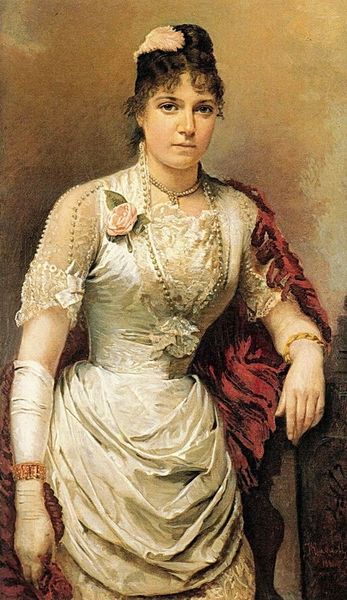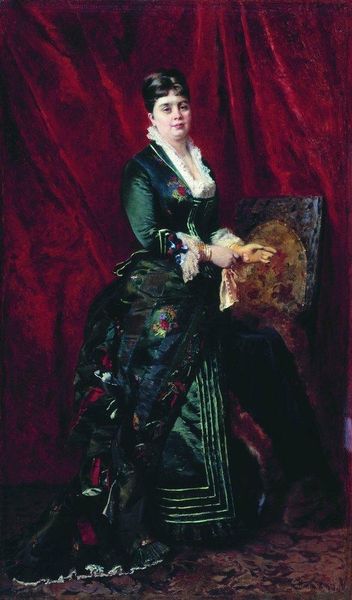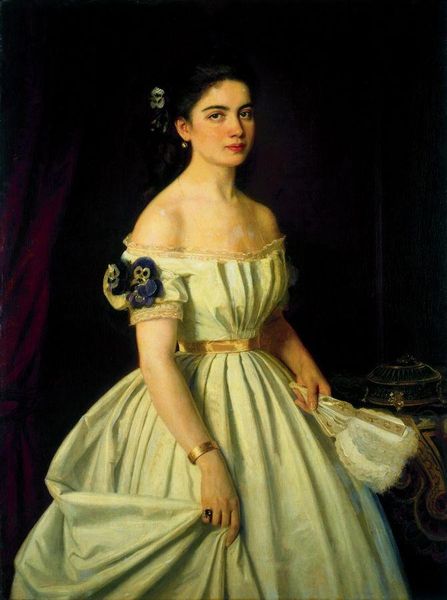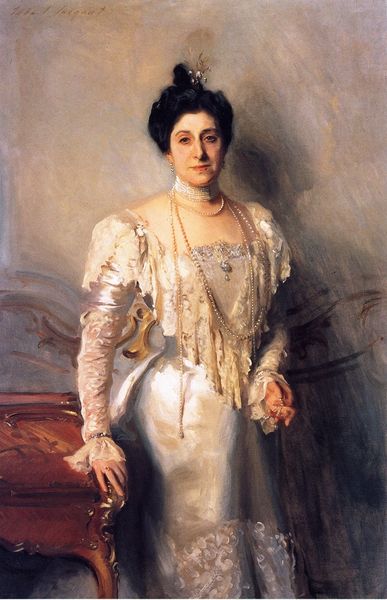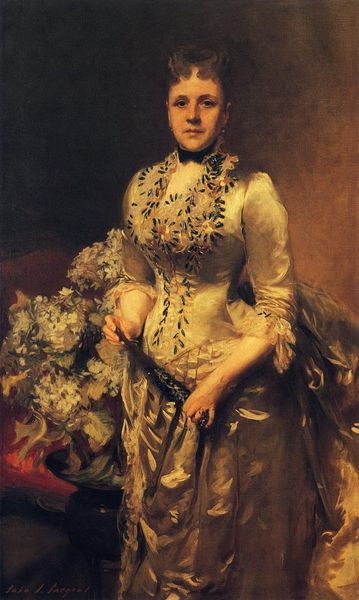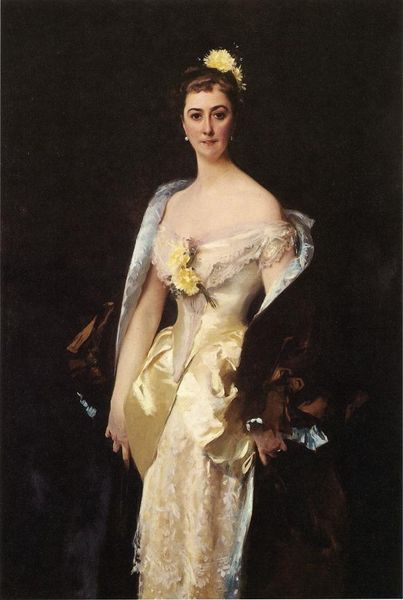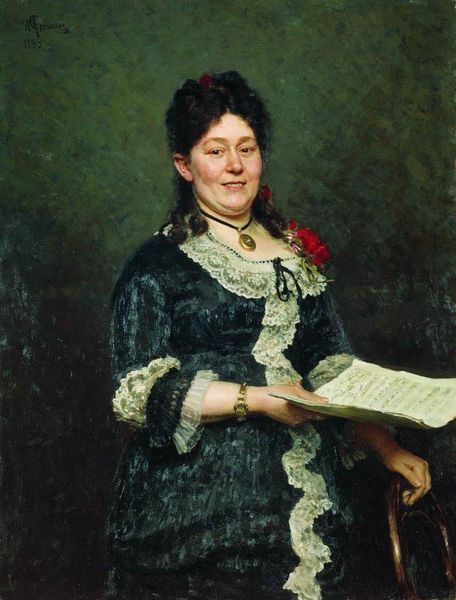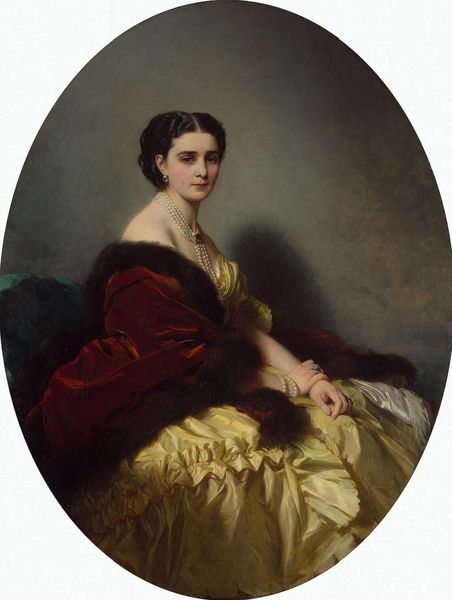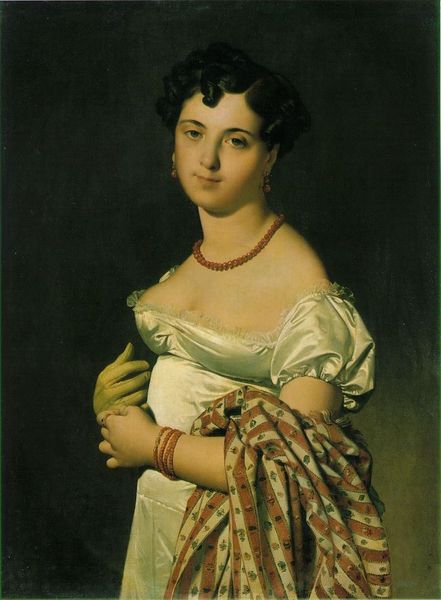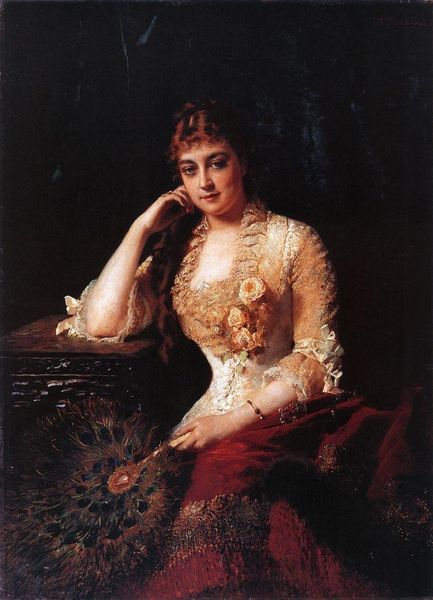
Copyright: Public domain
Editor: We're looking at Konstantin Makovsky's "Portrait of Tradeswoman E.Rastorgueva" from 1885, rendered in oil paint. I find her gaze both inviting and subtly challenging. What strikes you about this painting? Curator: Oh, she's absolutely commanding, isn't she? Beyond the velvet and lace – which whisper of a certain societal stratum, almost an old-world grandeur, it’s her presence, really, isn't it? Those shrewd, kind eyes, framed by that delicate headpiece… they hint at stories. Imagine the bustling marketplaces, the keen negotiations. And the red background! Like a silent scream behind quiet composure, you know? Don’t you just want to pluck her from the canvas and share a cup of strong tea, hear her tales of bartering and balancing life's ledger? Editor: It's interesting that you call it a scream, when to me the deep red suggests an intimacy, as if she is receiving you into a domestic sphere, like she is in charge there. Is she idealized at all? Curator: Well, Romanticism often dips its brush into idealization, doesn’t it? But I wouldn't call this blatant flattery. See the slight imperfections, the hints of gravity in her face? I feel Makovsky respected her, saw her strength not in abstract symbolism but in the everyday, in the capable hands adorned with delicate gold. Maybe it's a quiet ode to a merchant-class woman, and these pearls, fabrics, gold decorations signal dignity and well-earned status within an evolving Russian society. Editor: That changes my perception completely. It goes beyond just a portrait to capturing a moment in time and a shifting societal dynamic. Curator: Precisely! Art is often more layered than lace, isn't it? I came in with a notion, as did you. Isn't it wonderful how our eyes and imaginations can uncover so much meaning together? Editor: It really is, thank you for the new perspective!
Comments
No comments
Be the first to comment and join the conversation on the ultimate creative platform.


